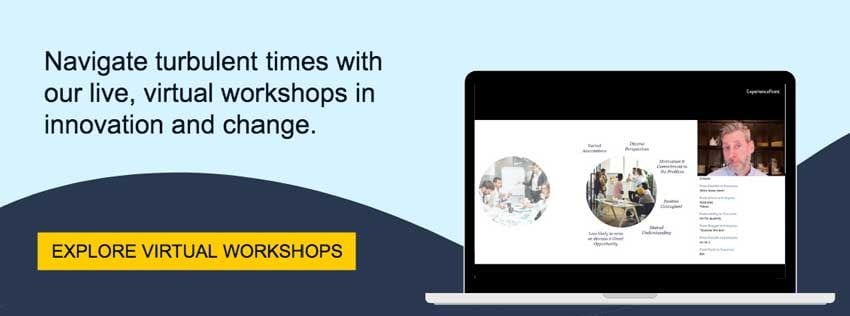Every human lives in their own version of reality. In fact, that reality is the only one we will ever know. Each is colored by an innumerable array of circumstances and experiences that we begin to encounter at the moment of our conception.
As we go through life, we carry our version of reality into every interaction we have and every choice we make. That’s what makes us human.
Yet, while humans are singular in our realities, we are, of course, not singular in the world. With over 7 billion people surrounding us on the planet, it is crucial that we learn to look beyond our own person and attempt to understand the experiences, reactions, and realities of others. This takes empathy.
With that in mind, it would seem second nature that humans endeavoring to design products and services for other humans would use empathy as their primary tool. However, empathy is often overlooked in the process of design. In speeding products to market, businesses frequently rely on assumptions — creating what they think their customers might need or want without ever engaging the customers themselves.
Human-centered design, as a methodology, is powered by empathy — it recognizes that the sincere and thorough understanding of one’s customers and their needs cannot be achieved merely through assumption. As such, it introduces an array of techniques to help businesses actively and directly engage with those they seek to serve. The result? Products and services that consistently delight and a loyal customer base fortified.
A few human-centered techniques designed to inspire empathy include:
-
Acting like a novice. Your customers are the experts—even if you’re the company’s CEO or the smartest developer on your team. In other words, don’t lecture, explain or offer corrections. Instead, put yourself in the mindset of a beginner, listen to what customers say and use their insights to learn something new.
-
Asking why. When a customer reports an event, a feeling or an obstacle, ask them to elaborate. Ask why they think it happened. Keep asking “why” in response to their answers, until you get to the root cause.
-
Choosing not to lead. If you want honest feedback, you need to ask neutral, open-ended questions. That means, instead of asking what they love or hate about the product, ask what they think of it. Avoid yes/no or highly specific questions and encourage customers to tell stories about their experiences to bring life to their answers. When we ask neutral questions, customers feel free to tell you how they really feel. That’s where the true insights emerge.
-
Customer documentation. Ask customers to record their experience with your product or service through photos or videos. Have them capture every important step in the relevant activity, including everyone they interact with and key milestones or points of frustration. Ask them to share their documentation and tell you what it all means. This combination of visual elements and their own interpretation can help you see the experience through their eyes and identify opportunities for innovation.
One of the most recognized examples of empathy and human-centered design in action comes from 2007, when Linus Liang and his team at the Stanford d. School were challenged to design an affordable incubator to curb premature infant death in low-to-middle income countries.
They team committed to building empathy by traveling to Nepal and observing healthcare workers who were responsible for treating premature and low-birth-weight babies. By way of this process they learned that incubators were actually plentiful in the cities, and that problematic births were most likely to begin in rural villages, with the vast majority of babies dying en route to hospitals because caregivers were unable to regulate their body temperatures.
Reframing their mission, Linus and his team gathered information directly from the rural villages as well as knowledge related to body temperature regulation, and built the Embrace Infant Warmer — an ultra-low-cost, portable and electricity-free way to insulate a child against the cold that could be readied with boiling water. Since that time, the product has been used to aid over 300,000 LBW and premature babies in over 20 countries around the globe.
Here we have a direct example of empathy overpowering assumptions and leading to discoveries and innovations that have a direct, profound and lasting impact on others.
Remembering that each human being is driven by their individual reality, it is the responsibility of designers to reach beyond the boundaries of their own hearts, minds and worlds and to engage with those they are building for. How better to start this process than with empathy?
